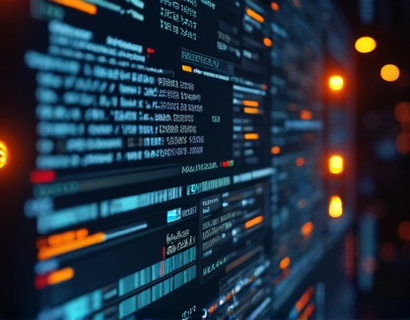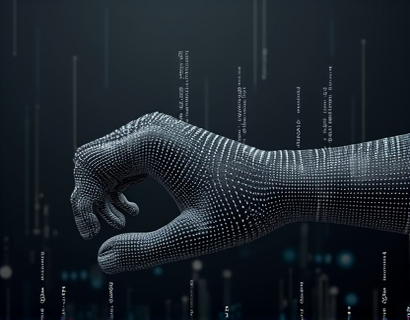AI and Crypto: Transforming Digital Engagement in the Crypto Ecosystem
The intersection of artificial intelligence (AI) and cryptocurrency is ushering in a new era of digital engagement, redefining how users interact with apps and services within the crypto ecosystem. This transformative combination is not just about enhancing user experiences but also about creating more secure, efficient, and innovative digital environments. As tech-savvy individuals and enthusiasts delve deeper into the realms of cryptocurrency and AI, understanding the synergy between these two technologies becomes crucial for anyone looking to stay ahead in the rapidly evolving digital landscape.
Understanding AI in the Crypto Context
Artificial intelligence, defined by its ability to simulate human intelligence processes such as learning, reasoning, and self-correction, plays a pivotal role in the crypto space. In this context, AI is utilized to analyze vast amounts of data, predict market trends, automate trading strategies, and enhance security measures. The integration of AI into cryptocurrency operations brings about a level of sophistication and efficiency that traditional systems cannot match.
One of the primary applications of AI in crypto is in market analysis and prediction. Machine learning algorithms can process historical data, identify patterns, and forecast future price movements with a degree of accuracy that surpasses human capabilities. This predictive power is invaluable for investors seeking to make informed decisions and maximize their returns. Moreover, AI-driven bots can execute trades at optimal times, reducing emotional biases and increasing the likelihood of profitable outcomes.
Enhancing Security with AI
Security is a paramount concern in the crypto world, where the risk of fraud, hacking, and theft is ever-present. AI technologies offer robust solutions to bolster security protocols. For instance, AI-powered systems can detect anomalies in transaction patterns, identifying potential fraudulent activities in real-time. These systems learn from past incidents, continuously improving their ability to spot and mitigate threats.
Additionally, AI can enhance the security of digital wallets and exchanges through biometric authentication and behavioral analysis. By analyzing user behavior, AI can detect unusual activities and alert users or freeze accounts to prevent unauthorized access. This proactive approach to security not only protects users' assets but also builds trust in the crypto ecosystem.
AI-Driven User Experience Innovations
The fusion of AI and crypto is not limited to backend operations; it significantly enhances the frontend user experience as well. One of the most notable innovations is the development of user-friendly interfaces that adapt to individual preferences and behaviors. AI algorithms can analyze user interactions, learning their preferences and tailoring the interface to provide a more personalized experience.
For example, a crypto trading platform powered by AI can present users with a dashboard that highlights the assets and information most relevant to them based on their trading history and current market conditions. This level of customization not only streamlines the user experience but also increases engagement and satisfaction.
Smart Contracts and AI: A Powerful Combination
Smart contracts, self-executing contracts with the terms directly written into code, are a cornerstone of blockchain technology. When combined with AI, smart contracts become even more powerful and versatile. AI can be used to dynamically adjust the parameters of smart contracts based on real-time data, making them more responsive and adaptive to changing conditions.
For instance, in decentralized finance (DeFi) applications, AI can optimize the execution of smart contracts by analyzing market data and adjusting variables such as interest rates or collateral requirements. This ensures that contracts are executed efficiently and fairly, reducing the need for intermediaries and lowering transaction costs.
Enhancing Decentralized Applications (DApps)
Decentralized applications (DApps) are at the forefront of the crypto revolution, offering decentralized alternatives to traditional web applications. AI enhances the functionality and user experience of DApps in several ways. For one, AI can improve content recommendation systems within DApps, suggesting relevant services or information based on user behavior and preferences.
Moreover, AI-driven chatbots and virtual assistants can provide users with real-time support and guidance, answering queries and assisting with complex tasks. These AI-powered tools not only enhance user engagement but also reduce the workload on human support teams, making the overall service more efficient.
Challenges and Considerations
While the integration of AI and crypto offers numerous benefits, it also presents several challenges that need to be addressed. One of the primary concerns is the computational power required to run AI algorithms, which can be resource-intensive and costly. However, advancements in cloud computing and the rise of edge computing are making these resources more accessible and affordable.
Another challenge is the regulatory landscape. As AI and crypto continue to evolve, regulatory bodies are grappling with how to oversee these technologies. Ensuring compliance while fostering innovation is a delicate balance that requires collaboration between technologists, policymakers, and industry stakeholders.
The Future of AI and Crypto Integration
The future of AI and crypto integration holds immense potential. As technology advances, we can expect even more sophisticated applications that further enhance digital engagement. For instance, the development of AI-driven predictive maintenance for blockchain infrastructure can ensure the reliability and uptime of decentralized systems. Additionally, the integration of AI with other emerging technologies like the Internet of Things (IoT) can create seamless and interconnected digital experiences.
In conclusion, the combination of AI and crypto is transforming the digital engagement landscape, offering unprecedented opportunities for innovation and efficiency. By leveraging these technologies, the crypto ecosystem is becoming more secure, user-friendly, and dynamic, paving the way for a more inclusive and prosperous digital future.










































